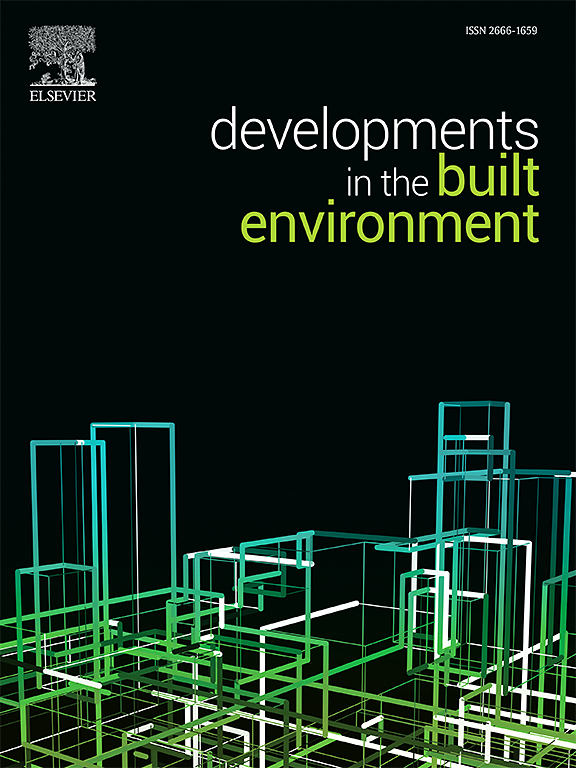Impact of using high strength low alloy steel on reducing the embodied energy, carbon, and water impacts of building structures: A case study
IF 6.2
2区 工程技术
Q1 CONSTRUCTION & BUILDING TECHNOLOGY
引用次数: 0
Abstract
Buildings consume embodied energy (EE) and embodied water (EW) during construction due to the use of materials like steel, adding embodied carbon (EC) to the atmosphere. Using high strength low alloy (HSLA) steel can save steel requirements; however, this potential of HSLA steel to decrease steel use has not been evaluated thoroughly. Using a cradle-to-site system boundary, this paper applies input-output-based hybrid (IOH) modeling to measure savings in steel and EE, EC, and EW use due to using HSLA steel in a reinforced concrete and steel structure. The IOH model integrates macro-economic input-output data with structural analysis to quantify these savings in embodied impacts. Results show that HSLA steel decreases the requirements of steel sections and rebar by 2.5 %–7 % and 6 %–40 %, respectively. These savings generate 2 %–6 % decrease in EE and EC for steel sections and 6 %–18 % for rebar, reducing EW by 2 %–6 % and 5 %–18 % for steel sections and rebar, respectively.
使用高强度低合金钢对降低建筑结构蕴含能量、碳和水影响的影响:一个案例研究
由于使用钢材等材料,建筑在施工过程中消耗隐含能量(EE)和隐含水(EW),向大气中添加隐含碳(EC)。采用高强度低合金(HSLA)钢可节省钢材要求;然而,HSLA钢减少钢材使用的潜力尚未得到彻底的评估。使用摇篮到现场的系统边界,本文应用基于输入输出的混合(IOH)模型来衡量由于在钢筋混凝土和钢结构中使用HSLA钢而节省的钢材和EE, EC和EW使用。IOH模型将宏观经济投入产出数据与结构分析相结合,以量化这些节约的具体影响。结果表明,HSLA钢对型钢和钢筋的要求分别降低2.5% ~ 7%和6% ~ 40%。这些节能措施使钢结构的能效和EC降低了2% - 6%,螺纹钢的能效和EC降低了6% - 18%,钢结构和螺纹钢的能效和EC分别降低了2% - 6%和5% - 18%。
本文章由计算机程序翻译,如有差异,请以英文原文为准。
求助全文
约1分钟内获得全文
求助全文
来源期刊

Developments in the Built Environment
Multiple-
CiteScore
7.40
自引率
1.20%
发文量
31
审稿时长
22 days
期刊介绍:
Developments in the Built Environment (DIBE) is a recently established peer-reviewed gold open access journal, ensuring that all accepted articles are permanently and freely accessible. Focused on civil engineering and the built environment, DIBE publishes original papers and short communications. Encompassing topics such as construction materials and building sustainability, the journal adopts a holistic approach with the aim of benefiting the community.
 求助内容:
求助内容: 应助结果提醒方式:
应助结果提醒方式:


